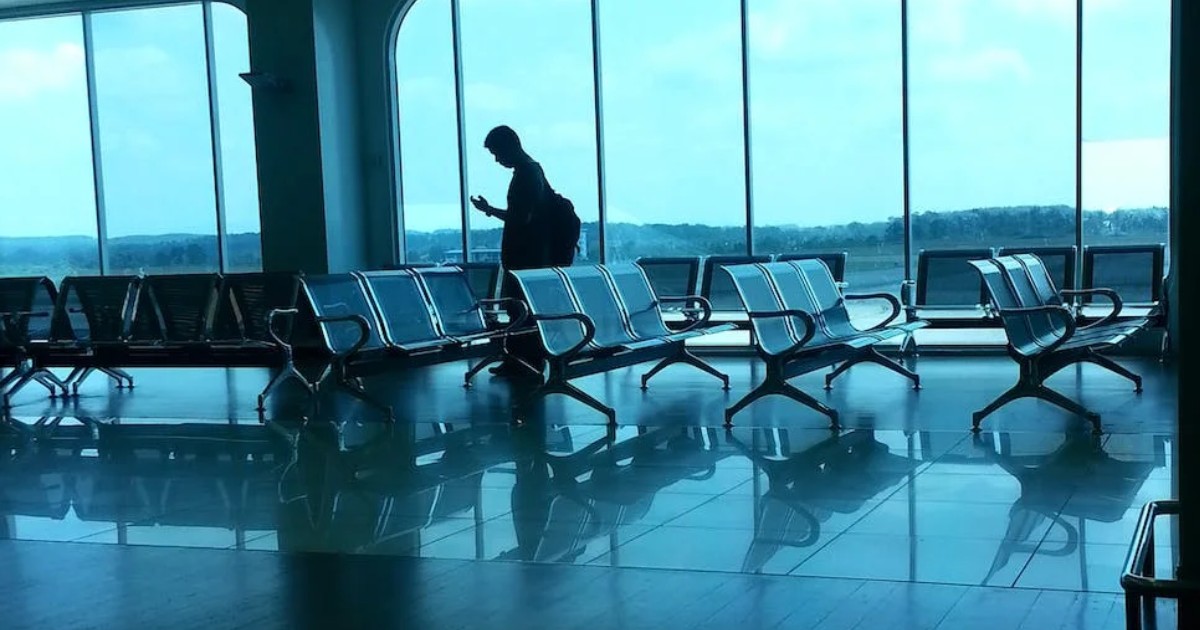About the Airport – Belfast International Airport
Belfast International Airport is the busiest airport in the whole of Northern Ireland, with visitor numbers, in Ireland, only surpassed by those of Dublin Airport. The airport is situated just over 13 miles to the northwest of Belfast city centre.
In 2023, Belfast International Airport handled over 5.9 million passengers, marking a significant increase from 4 million passengers in 2013. The airport, now the busiest in Northern Ireland, operates 24/7, catering to both commercial flights and flight training. Ownership has transitioned from Abertis to Vinci Airports, further emphasizing its role as a key transportation hub.
According to Flightright Data, in 2023, Belfast (Belfast Int.) Airport had a total of 20,996 scheduled flights. Out of these, 201 flights were cancelled, representing 0.96% of all scheduled flights. In addition, 154 flights were delayed, making up 0.73% of the total. There were 355 incidents, which constituted 1.69% of all departing flights.
Among the airlines operating from Belfast International Airport are Jet2, easyJet, Ryanair, and Tui.
Almost 100 Years of Airport History
As with a number of major airports in the British Isles, Belfast International Airport can date its origins back to World War One when it was known as Aldergrove Airport. In 1917, the Royal Flying Corps selected the site for training purposes, and it was still used by the RAF after the conflict. In the early 1920s the site began being used for civil flights, though a regular service didn’t begin for another decade. Some of the early destinations included Liverpool, Glasgow and London. During the Second World War, Aldergrove Airport was again used by the RAF, with changes made to the size of the existing runways, and they have remained unchanged.
Now known as the George Best Belfast City Airport, Nutts Corner Airport was the major civil airport in Northern Ireland in the first few years after World war Two. A rapid increase in civil flights however led to Aldergrove being increasingly utilized to take the strain off Nutts Corner. In the 1960s Aldergrove saw extensive improvements, and it became a major airport in its own right, with passenger jets flying from the airport from the mid-1960s onwards. By the end of the decade, flights were going as far as New York City. In 1983 Aldergrove was renamed Belfast International Airport, and the airport was privatised in 1994.
Recent Delays and Your Right to Receive Compensation
In terms of possible monetary compensation for passengers affected by a delay, an example would be of a Jet2 flight from Belfast to Leeds. If this flight had been delayed for at least 3 hours because of boarding issues, it could result in compensation of up to £480 (560€) for each passenger. Flightright is a company who helps passengers claim their compensation.
Delay, cancellation, overbooking or missed connection flight? You are entitled to:
| Short distance up to 1500 km | Medium distance up to 3500 km | Long distance from 3500 km |
| e.g. London – Edinburgh | e.g. London – Athens | e.g. London – Tokyo |
| 250€ | 400€ | 600€ |
Statistical Overview of Airlines at Belfast (Belfast Int.) Airport in 2023
Belfast (Belfast Int.) experienced a dynamic year in 2023. The most active carrier was easyJet, operating a total of 16,523 flights with 197 cancellations and 129 delays, reflecting a significant volume of operations with a manageable number of disruptions. Following close behind, Ryanair UK managed 2,287 flights, with only 4 cancellations and 13 delays, indicating efficient performance.
Jet2 also played a crucial role, managing 1,531 flights with no cancellations and 9 delays, showcasing excellent reliability. The smaller scale operations of Ryanair (275 flights) and TUI Airways (Thomson Airways) (270 flights) also showed strong performance with no cancellations and minimal delays. Overall, the operational data from Belfast (Belfast Int.) in 2023 showcases a robust airline performance with easyJet leading in operations and other airlines maintaining high reliability and efficiency.
Top 5 Airlines at Belfast (Belfast Int.) Airport
The table below lists the top 5 airlines based on the number of flights, cancellations, and delays at Belfast (Belfast Int.) Airport in 2023.
| Airline Name | Total Flights | Cancellations | Delays |
|---|---|---|---|
| easyJet | 16,523 | 197 | 129 |
| Ryanair UK | 2,287 | 4 | 13 |
| Jet2 | 1,531 | 0 | 9 |
| Ryanair | 275 | 0 | 1 |
| TUI Airways (Thomson Airways) | 270 | 0 | 2 |
Recently cancelled or delayed flights at the Belfast International Airport
Here you’ll find delays and cancellations at the Belfast International Airport that could entitle you to financial compensation. Use our online calculator to check your entitlement to compensation and let Flightright do the rest of the work.
Search
What rights do I have as a passenger if my flight is canceled due to a strike at Belfast (Belfast Int.) Airport?
If your flight is planned to depart from Belfast (Belfast Int.) and there is a strike at the airport, first check if your flight is affected by the cancellations due to the strike. According to the EU Passenger Rights Regulation, you are entitled to alternative transportation or a refund of the ticket price. In addition, you may be entitled to compensation if there are no extraordinary circumstances, and it is an internal airline strike. Contact your airline for further information regarding substitute transportation, rebooking, or ticket refund as well as on-site services such as meals and, if necessary, accommodation and transportation to the hotel.
Can I get compensation if my flight is delayed or canceled at Belfast (Belfast Int.) due to a strike?
A flight cancellation or significant delay of more than three hours due to a strike is often considered an extraordinary circumstance, provided the strike is not within the control of the airline or its personnel. There is no entitlement to compensation in case of extraordinary circumstances. However, passengers should be aware of their rights to basic care and catering services at Belfast (Belfast Int.) Airport. This includes meals, refreshments, and, if necessary, accommodation, depending on the duration of the delay and the flight distance. Also, important to know: If your flight is canceled because the airline staff is on strike, you are entitled to a refund of your ticket price, alternative transportation, on-site catering, and additional compensation.
We will be happy to help you in case of flight problems with the airline for:
We have already been able to help with problems at the following airports, among others
We have already taken successful action against these and more airlines
Your flight did not go as planned?
In the event of flight delays, cancellations and overbooking, passengers may be entitled to compensation or ticket reimbursement. Flightright enforces your rights.

